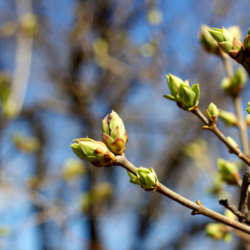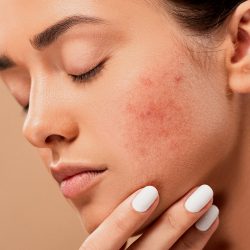Today in France, cardiovascular diseases are the leading cause of death, mainly linked to atherosclerosis. Despite numerous therapeutic innovations, the most effective means of combating the cardiovascular risk remains the implementation of preventive measures. We must therefore continue to inform and educate populations to fight effectively against the tormentor of hearts of the 21st century: cholesterol!
What is cholesterol ?
Cholesterol is a lipid formed from a sterol core. It is found in all cell membranes and is a component of ..3. The liver produces up to 1.2 g / day and it is also synthesized in the adrenal glands. For a long time, the ratio between free total cholesterol and esterified cholesterol was measured in the blood.
Currently, we dose HDL cholesterol (high density cholesterol) which has the property of eliminating cholesterol from the walls of the arteries and transporting it to the liver where it is thus degraded. It is the “good cholesterol“.
LDL cholesterol (low density cholesterol) is also assayed, which tends to deposit cholesterol on the arterial walls. It is “bad cholesterol“.
What is hypercholesterolemia ?
LDL hypercholesterolemia is therefore a major and frequent risk factor for many cardio and neurovascular diseases (ischemic heart disease, stroke, peripheral arterial disease, etc.).
In the familial form of hypercholesterolemia, the cholesterol level in the blood is on average twice normal, which is not the case in other forms (sometimes called “polygenic”). One in 500 French people has familial hypercholesterolemia, while at least 1/3 of French people can be considered to have polygenic hypercholesterolemia (a mixture of genetic predisposition, unsuitable diet or overweight). Elevated LDL cholesterol has been around since birth. For this reason, hypercholesterolemia onset later in life does not suggest a familial form.
A weak qualitative variation in fatty acid intakes, however, decreases LDL cholesterol in hypercholesterolemic subjects keeping high lipid intakes.
A little history
- The history of cholesterol begins in 1758, with the discovery by François-Paul Poulletier de la Salle of a new organic substance in gallstones.
- In 1816, the great chemist Michel-Eugène Chevreul clarified the physicochemical characteristics of this lipidic substance, which he baptized “cholesterine”.
- The German pathologist Rudolf Virchow described in 1857 an accumulation of cholesterol crystals in arterial atherosclerotic lesions.
Subsequently, many researchers will endeavor to clarify the metabolism and the physiological and pathological role of cholesterol, and to improve its dosage. The direct implication of hypercholesterolemia in the pathophysiology of the progression of atheroma and coronary artery disease, on the other hand, will not be demonstrated until the second half of the twentieth century. Lowering cholesterolemia then becomes a public health objective.
The discovery of the LDL-cholesterol receptor, by Joseph L. Goldstein and Michael S. Brown, and the appearance of statins at the origin of large-scale therapeutic trials, with convincing results in terms of cardiovascular morbidity and mortality and of overall mortality, therefore confirmed the lipid theory and the role of cholesterol as a major risk factor.
Some naturopathic advice to limit the accumulation of bad cholesterol :
- Engage in regular physical activity
- Reduce the consumption of animal fats (cold meats, fatty meats, butter, crème fraîche, non-skimmed milk and dairy products, fatty cheeses, etc.)
- Avoid foods highest in cholesterol, such as organ meats, and limit egg consumption to 2-3 per week
- Favor fats of vegetable origin: olive and peanut, sunflower, corn, grape seed, rapeseed, soybean, walnut oils
- Encourage the consumption of lean meats, poultry, fish, milk and skimmed or partially skimmed dairy products, as well as the consumption of fruits and vegetables
- Avoid foods of industrial origin rich in bad fats, such as pastries, pastries, certain cookies, ready-made meals, etc.
- Incorporate into the diet a supply of fiber, as well as sterols or plant stanols
Are there herbal remedies to lower cholesterol ?
There are indeed cholesterol-lowering medicinal plants. These decrease the absorption of cholesterol in the intestine and thus lower the level of cholesterol circulating in the blood. These plants are used in addition to a suitable and diligent diet in the treatment of excess cholesterol, alone or in combination with a lipid-lowering agent of the statin family.
Olive leaves :
Lipid-lowering, olive leaves contain oleuropein and its aglycone as well as hydroxytyrosol naturally. These active ingredients have the role of lowering the serum levels of total cholesterol and LDL and triglycerides. They also slow down the process of lipid peroxidation and enhance the antioxidant enzyme activity. Hypocholesterolemic, olive leaves also protect myocardial cells (cardiomyocytes), as well as vascular function. They are natural calcium antagonists.
Borage oil :
Rich in omega 6, borage oil is cholesterol-lowering. It lowers the level of cholesterol in the blood and acts as an antiplatelet agent and anti-diabetic agent.
Konjac :
Lipid-lowering, konjac is active in reducing weight gain. It causes an increase in the HDL / LDL ratio and is indicated in cases of hypercholesterolemia.
Fenugreek seeds :
These seeds have an anti-diabetic action; they indeed reduce postprandial diabetic glycemia, the absorption of carbohydrates, the production of glucose by the liver and improves the action of insulin. They are lipid-lowering, cholesterol-lowering and also have cardiotonic and hypoglycemic properties.
Chrysantellum :
Cette plante est généralement indiquée dans l’hyperlipidémie, l’hypercholestérolémie et l’hypertriglycéridémie.
Sources :
- Nordestgaard BG, Chapman MJ, Humphries SE et al.; European Atherosclerosis Society Consensus Panel. Familial hypercholesterolaemia is underdiagnosed and undertreated in the general population: guidance for clinicians to prevent coronary heart disease: consensus statement of the European Atherosclerosis Society. Eur Heart J 2013
- Do R, Stitziel NO, Won HH et al. Exome sequencing identifies rare LDLR and APOA5 alleles conferring risk for myocardial infarction. Nature 2015
- Cuchel M, Bruckert E, Ginsberg HN et al.; European Atherosclerosis Society Consensus Panel on Familial Hypercholesterolaemia. Homozygous familial hypercholesterolaemia: new
insights and guidance for clinicians to improve detection and clinical management. A position paper from the Consensus Panel on Familial Hypercholesterolaemia of the European Atherosclerosis Society. Eur Heart J 2014 - Wiegman A, Gidding SS, Watts GF et al.; European Atherosclerosis Society Consensus Panel. Familial hypercholesterolaemia in children and adolescents: gaining decades of life by optimizing detection and treatment. Eur Heart J 2015







